What Is Full Stack Developer: Essential Skills Required
4.8 out of 5 based on 8749 votesLast updated on 9th Jan 2024 15.9K Views
- Bookmark

Discover the role and skills of a Full Stack Developer. Learn how they master both front-end and back-end technologies for comprehensive web development.
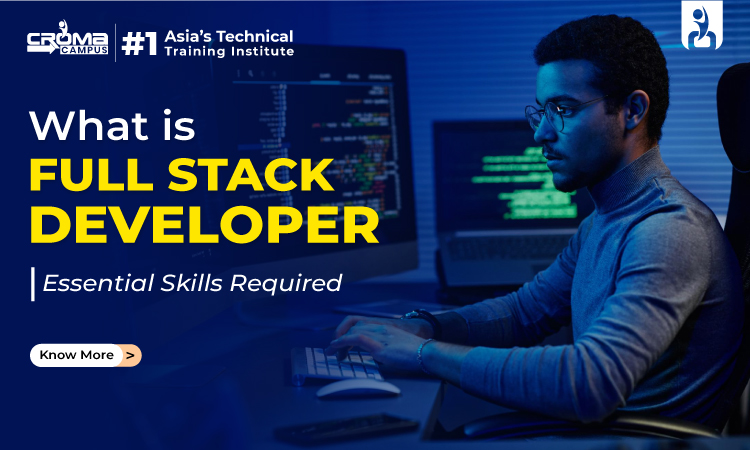
Introduction
In today's digital realm, the demand for versatile tech professionals is paramount. Full stack development stands as a beacon of this versatility, melding front-end and back-end expertise. This holistic approach to crafting software solutions fuels innovation, offering a comprehensive perspective in an ever-evolving technological landscape. Full Stack Developers are in huge demand today. Therefore, aspiring professionals can join the Full Stack Developer Classes for the best skill development and placement opportunities.
What is Full Stack?
Full stack development refers to the practice of designing, developing, and maintaining both the front-end and back-end aspects of a software application. A Full Stack Developer possesses expertise in multiple layers of technology required to create a complete and functional product.
On the front-end, Full Stack Developers work with languages such as HTML, CSS, and JavaScript to build the user interface and ensure a seamless user experience. They focus on designing elements that users interact with directly, such as layouts, buttons, and forms.
Meanwhile, on the back-end, they handle server-side development, managing databases, and ensuring the application functions properly. This involves working with server languages like Node.js, Ruby on Rails, Python, or PHP, and interacting with databases using SQL or NoSQL.
Moreover, Full Stack Developers understand various frameworks, libraries, and tools necessary for both front-end and back-end development. They possess a holistic understanding of how different layers of technology interact, enabling them to troubleshoot issues efficiently and optimize the entire application.
Key Skills Every Full Stack Developer Should Have
A proficient Full Stack Developer needs a diverse skill set to navigate both front-end and back-end development.
Here are essential skills:
- Front-end Development: Mastery of HTML, CSS, and JavaScript is fundamental. Knowledge of frameworks like React, Angular, or Vue.js enhances the ability to create responsive, user-friendly interfaces.
- Back-end Development: Proficiency in server-side languages such as Node.js, Python (Django/Flask), Ruby (on Rails), PHP, or Java is crucial. Understanding databases (SQL and NoSQL) and their interactions is essential.
- Version Control Systems: A strong grasp of Git or other version control systems for tracking changes and collaborating with teams.
- Understanding of APIs: Ability to work with and create RESTful or GraphQL APIs to connect front-end and back-end functionalities seamlessly.
- Basic Design Skills: Knowledge of UI/UX principles ensures the creation of visually appealing and user-centric interfaces.
- Knowledge of DevOps: Familiarity with deployment processes, containerization (Docker), and CI/CD (Continuous Integration/Continuous Deployment) pipelines streamlines development workflows.
- Problem-solving and Troubleshooting: Critical thinking and problem-solving skills to debug issues efficiently and optimize code for better performance.
- Soft Skills: Strong communication, teamwork, and adaptability are crucial for collaborating effectively within development teams and adapting to evolving project needs.
A Full Stack Developer with these skills can oversee and contribute effectively to all aspects of application development, ensuring a cohesive and robust end product.
What Is A Full Stack Developer?
A Full Stack Developer is a professional skilled in both front-end and back-end technologies, capable of building complete web applications. They possess expertise in programming languages, frameworks, and databases necessary for creating the user interface, managing server-side operations, and connecting these components. Their proficiency spans HTML, CSS, and JavaScript for front-end, and server-side languages like Node.js, Python, or Ruby on Rails for back-end development. Full Stack Developers understand the entire development process, enabling them to create, troubleshoot, and maintain applications independently or within a team, contributing across the entire technology stack.
Responsibilities Of A Full Stack Developer
Full Stack Developers carry diverse responsibilities across the entire application development lifecycle.
Their duties encompass the following
- Design and Development: Creating responsive and intuitive user interfaces using HTML, CSS, and JavaScript, alongside developing robust back-end functionalities using server-side languages and frameworks. They design the architecture, ensuring seamless integration between front-end and back-end components.
- Database Management: Handling database operations, including schema design, querying, and optimization, using SQL or NoSQL databases. They ensure data integrity and efficient storage and retrieval.
- API Development and Integration: Building and utilizing RESTful or GraphQL APIs to facilitate communication between different parts of the application, enabling smooth interaction between front-end and back-end systems.
- Version Control and Collaboration: Utilizing version control systems like Git, collaborating with teams, and managing code repositories to track changes and enable seamless collaboration among developers.
- Testing and Debugging: Conducting thorough testing to identify and fix bugs, ensuring the application’s reliability and performance across various devices and browsers.
- Deployment and Maintenance: Deploying applications, configuring servers, and ensuring ongoing maintenance and updates to keep the application secure, optimized, and up-to-date with evolving technologies.
- Problem-solving and Optimization: Identifying performance bottlenecks, optimizing code, and implementing efficient solutions to enhance the application’s speed, scalability, and overall performance.
Full Stack Developers handle these responsibilities with a comprehensive understanding of the entire development stack, contributing to the creation of functional, user-friendly, and scalable applications.
You May Also Read This:
Full Stack Developer Course Fees
Career Guidance For Node JS Full Stack Developer
Full Stack Developer Interview Questions
Java Full Stack Developer Course Syllabus
Skills Required for Java Full Stack Developer
Salary Of A Full Stack Developer
The average salary for a Full Stack Developer in India ranges from ₹500,000 to ₹1,500,000 per annum, depending on experience, location, and company size. Senior-level professionals with extensive expertise may earn higher, up to ₹2,500,000 or more annually.
How To Become A Full Stack Developer?
Becoming a Full Stack Developer requires a multifaceted skill set and a structured approach:
- Learn the Basics: Start with foundational languages like HTML, CSS, and JavaScript. Understand their roles in web development and practice building basic web pages.
- Master Front-end Technologies: Dive into front-end frameworks like React, Angular, or Vue.js to create interactive user interfaces. Learn responsive design principles and CSS preprocessors.
- Grasp Back-end Development: Explore server-side languages such as Node.js, Python (with Django or Flask), Ruby on Rails, or PHP. Understand databases (SQL and NoSQL), APIs, and server-side architecture.
- Database Knowledge: Gain proficiency in database management, understanding how to design schemas, perform queries, and optimize data storage.
- Version Control and Collaboration: Familiarize yourself with Git and collaborate on projects using repositories like GitHub or GitLab.
- Practice and Build Projects: Apply knowledge by working on personal projects or contributing to open-source projects. This hands-on experience is invaluable for learning and showcasing skills.
- Continuous Learning and Adaptation: Stay updated with evolving technologies, new frameworks, and best practices through courses, tutorials, and community engagement.
- Soft Skills and Problem-solving: Develop strong problem-solving abilities, effective communication, teamwork, and adaptability, which are essential for success in a development team.
- Create a Portfolio: Showcase your projects, skills, and contributions on platforms like GitHub or by creating a personal website to demonstrate your capabilities to potential employers.
By following these steps and continuously honing your skills, you can embark on the journey to becoming a proficient Full Stack Developer.
Conclusion
Full stack development epitomizes versatility in modern software engineering, merging front-end and back-end expertise. With a holistic understanding of various technologies, the Full Stack Developer Course Online helps one craft complete solutions, and contribute to seamless user experiences. Their adaptability and comprehensive skill set remain pivotal in shaping innovative digital landscapes.
FAQs
- Are Full Stack Developers in Demand in 2025?
Yes, Full Stack Developers were in high demand due to their versatile skill set. This demand will likely continue into 2025.
- What is better full-stack or front-end developer?
The choice between full-stack and front-end development depends on preference. Full-stack developers handle both front-end and back-end, offering broader skills, while front-end developers specialize in user interfaces.
- How to prepare for a Full Stack Developer interview?
Prepare by reviewing front-end and back-end technologies, practising coding challenges, understanding system design concepts, and being ready to discuss past projects and problem-solving approaches.
- Which is more in demand full-stack or backend?
As of recent trends, both full-stack and backend developers are in high demand. However, full-stack developers with skills in both areas might have a slight edge due to their versatility.
Subscribe For Free Demo
Free Demo for Corporate & Online Trainings.
Your email address will not be published. Required fields are marked *
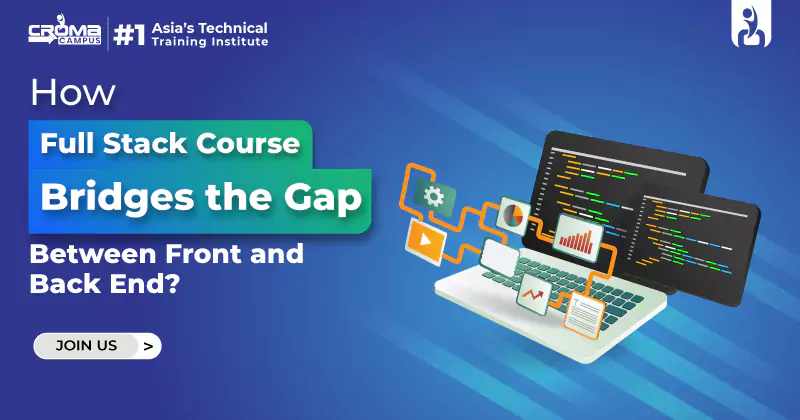
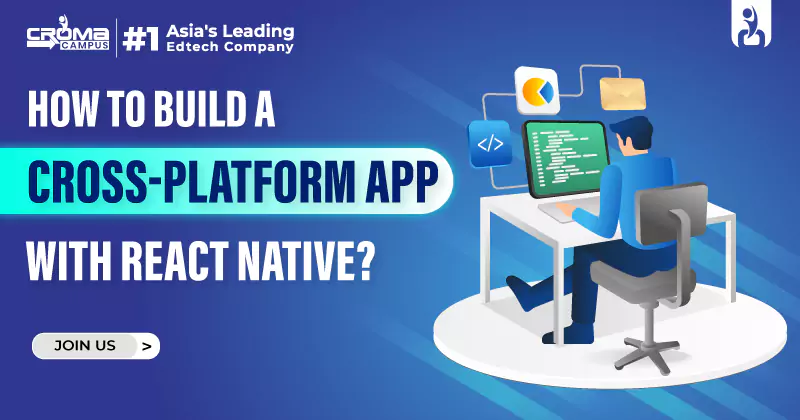
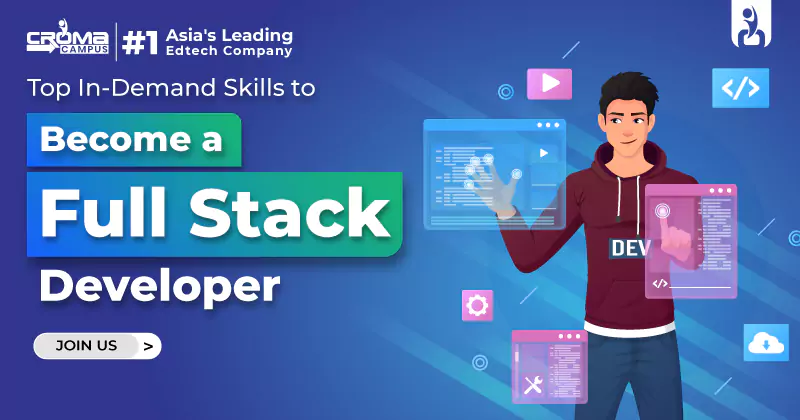
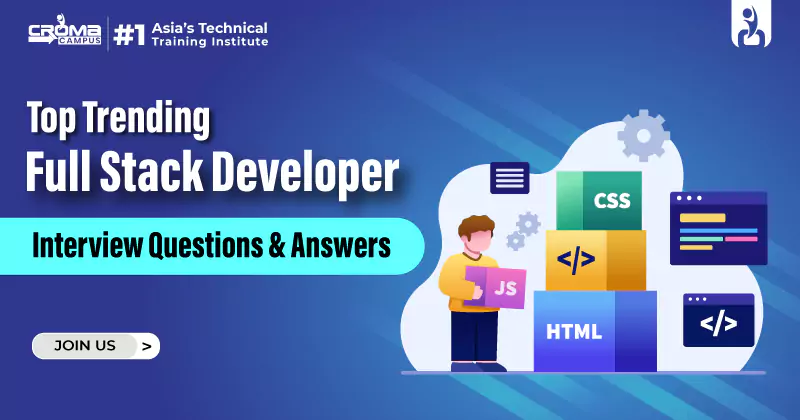
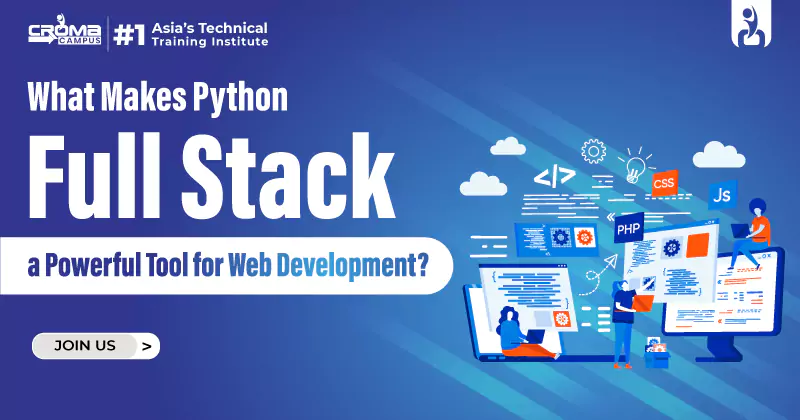
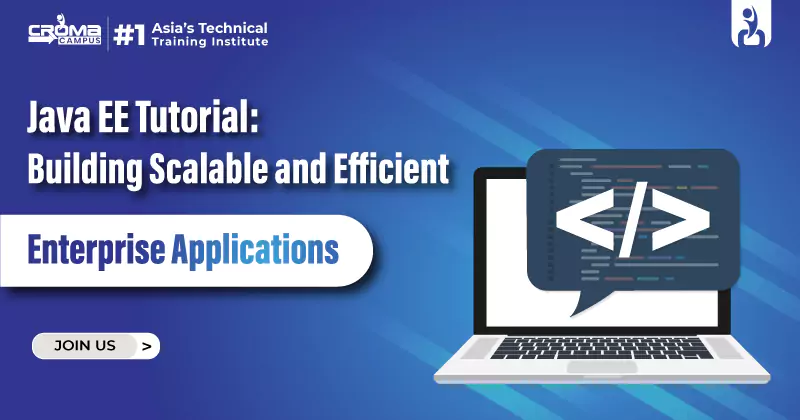
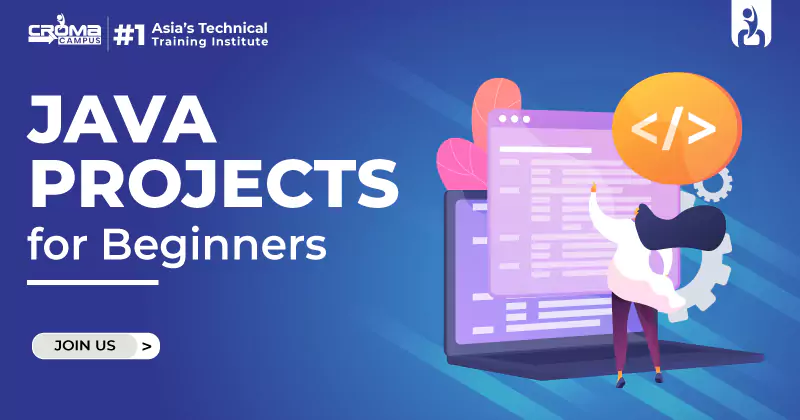
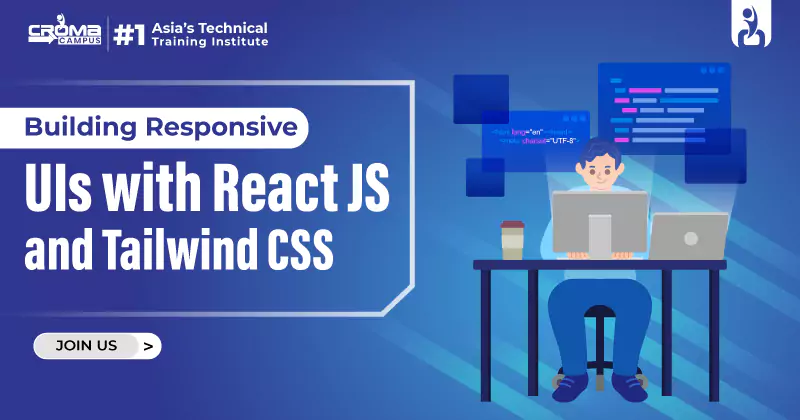
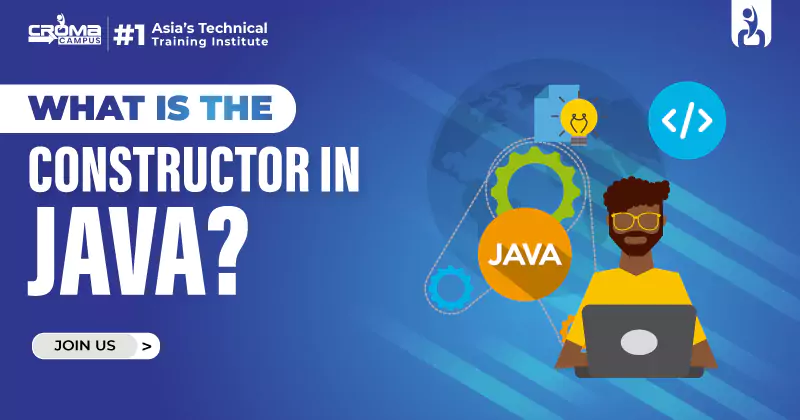
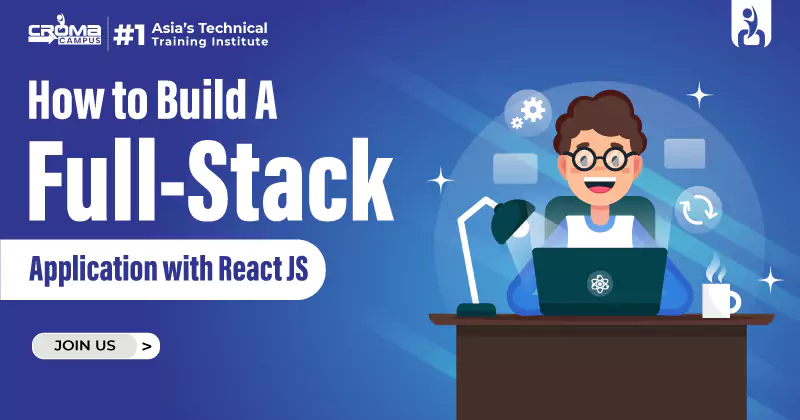
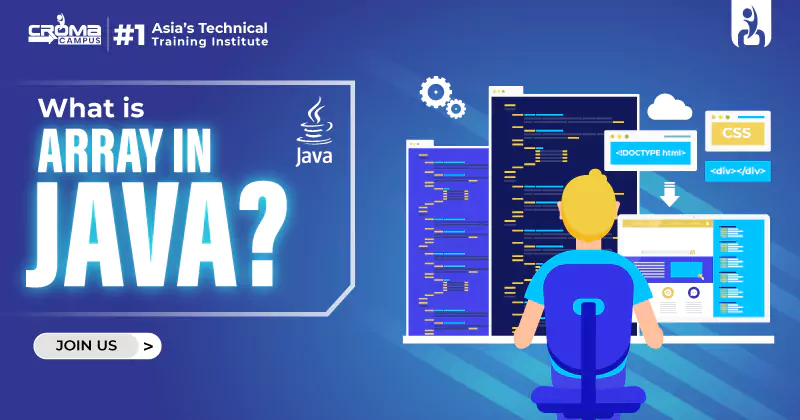
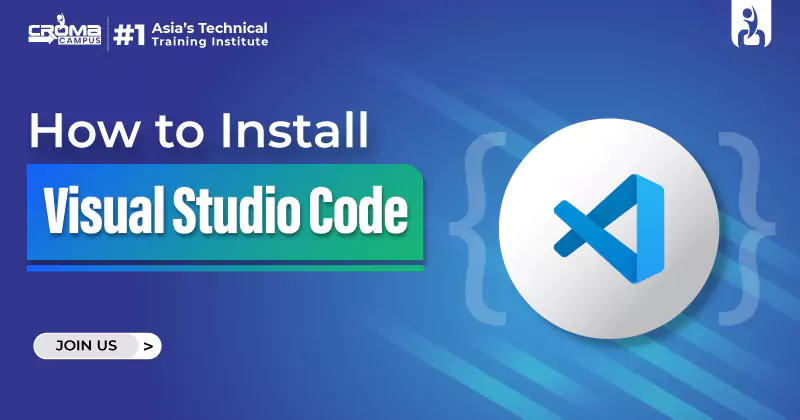









 Master in Cloud Computing Training
Master in Cloud Computing Training